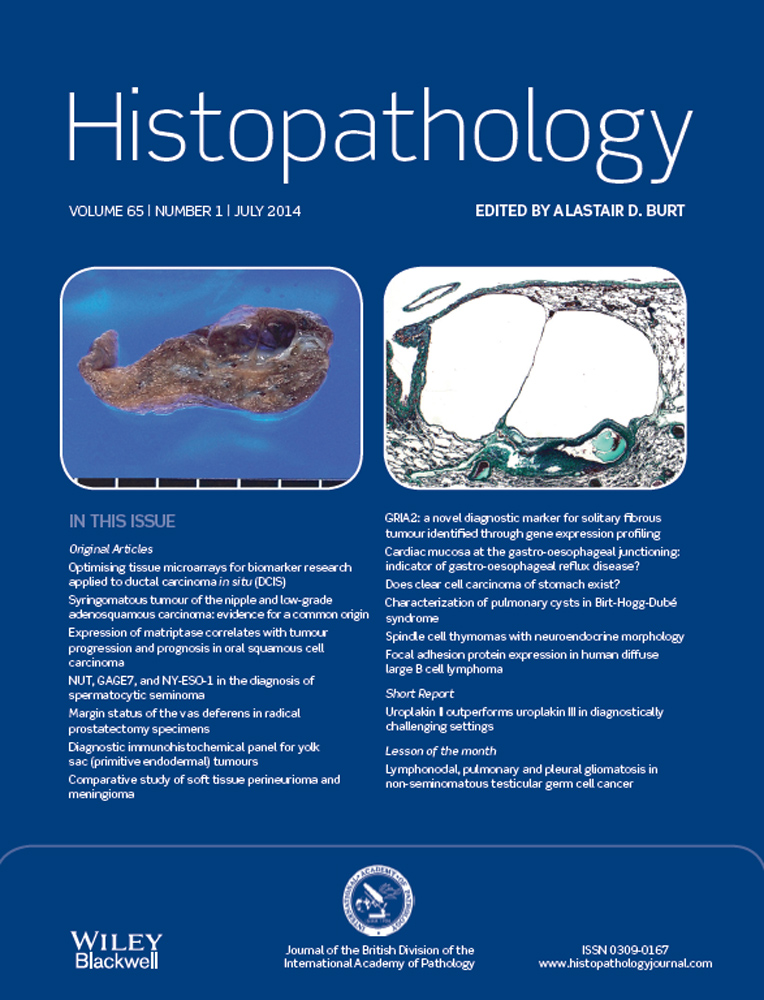Does clear cell carcinoma of stomach exist? Clinicopathological and prognostic significance of clear cell changes in gastric adenocarcinomas
Abstract
Aims
In contrast to clear cell carcinomas developing in other organs (e.g. ovary and uterus), gastric adenocarcinomas with clear cell features are not well characterized.
Methods and results
We evaluated a series of 762 gastric adenocarcinomas for the presence of clear cell changes; and investigated the nature of the changes using several histochemical and immunohistochemical markers, their association with various clinicopathological features, and their prognostic significance. Clear cell changes were observed in 8.5% (n = 65) of gastric cancers. Cases with clear cell changes (GCC) were associated significantly with older age, intestinal type histology, body/fundic location, greater depth of invasion, lymph node metastases and lymphovascular invasion. An increasing proportion of clear cell changes indicated a worsening prognosis, and was identified as an independent marker of poor prognosis using the Cox proportional hazard model (hazard ratio, 0.462; P = 0.003). Of 62 GCCs subjected to special staining, 35 cases (55.6%) displayed cytoplasmic accumulation of glycogen, while 21 (33.3%) contained mucin. GCCs showing glycogen accumulation expressed AFP, glypican-3 and CD10 more commonly than those with mucin, which commonly expressed Muc5AC and Muc6.
Conclusion
Clear cell gastric adenocarcinoma is a unique subgroup of gastric cancer which, although heterogeneous, has a poor prognosis.




